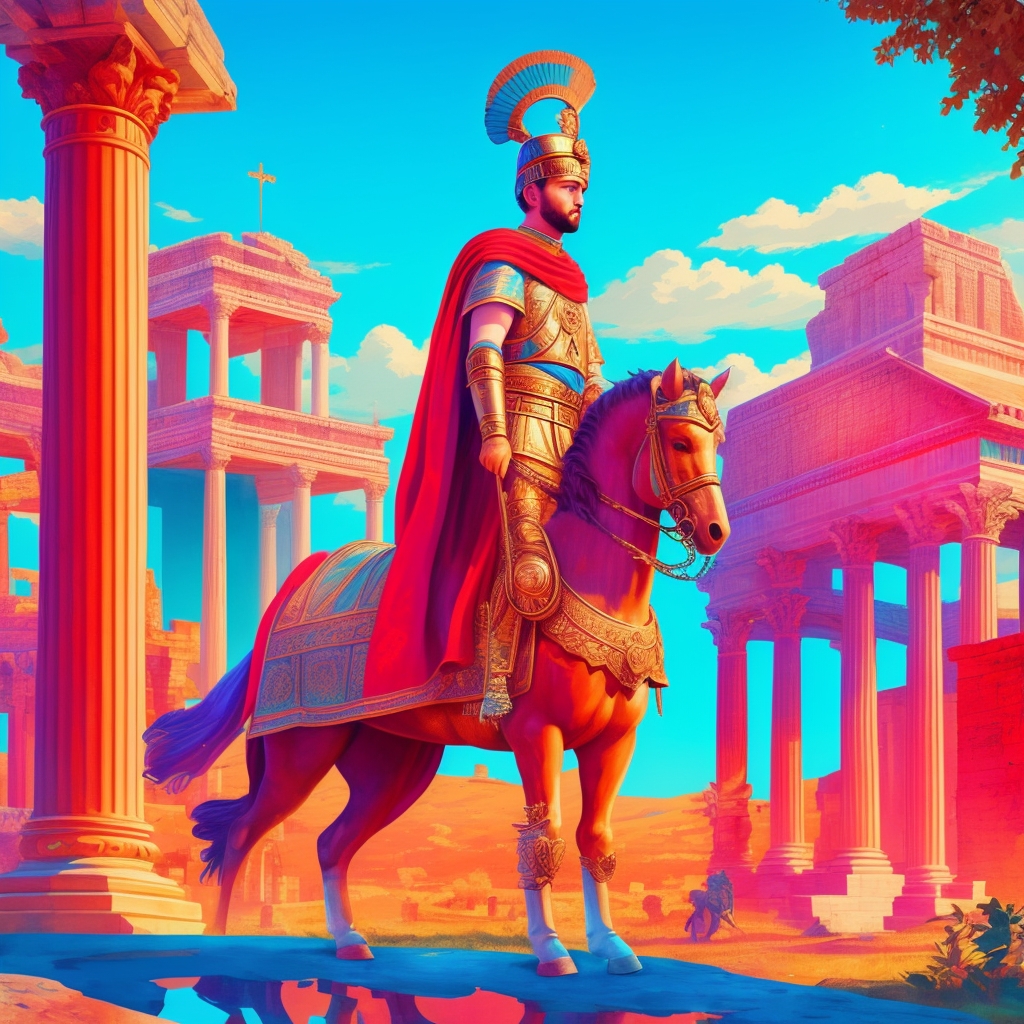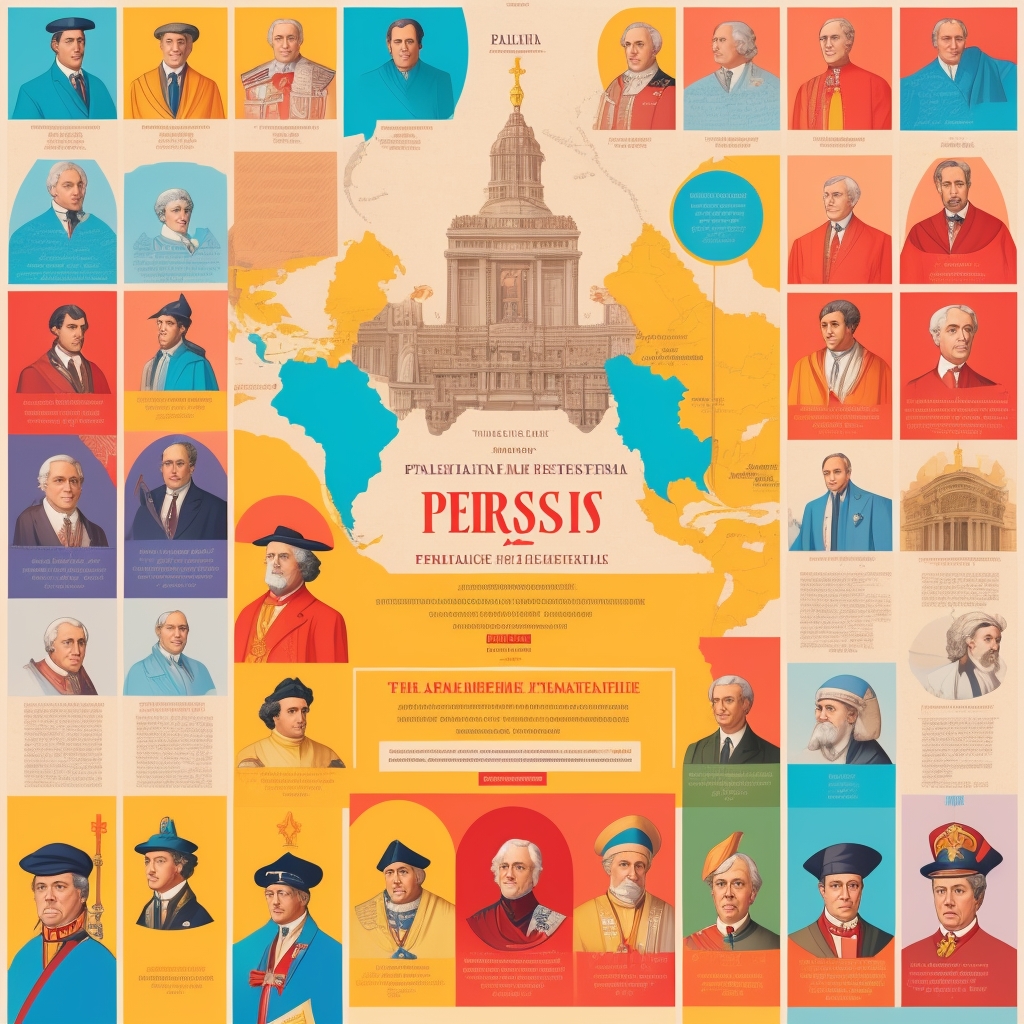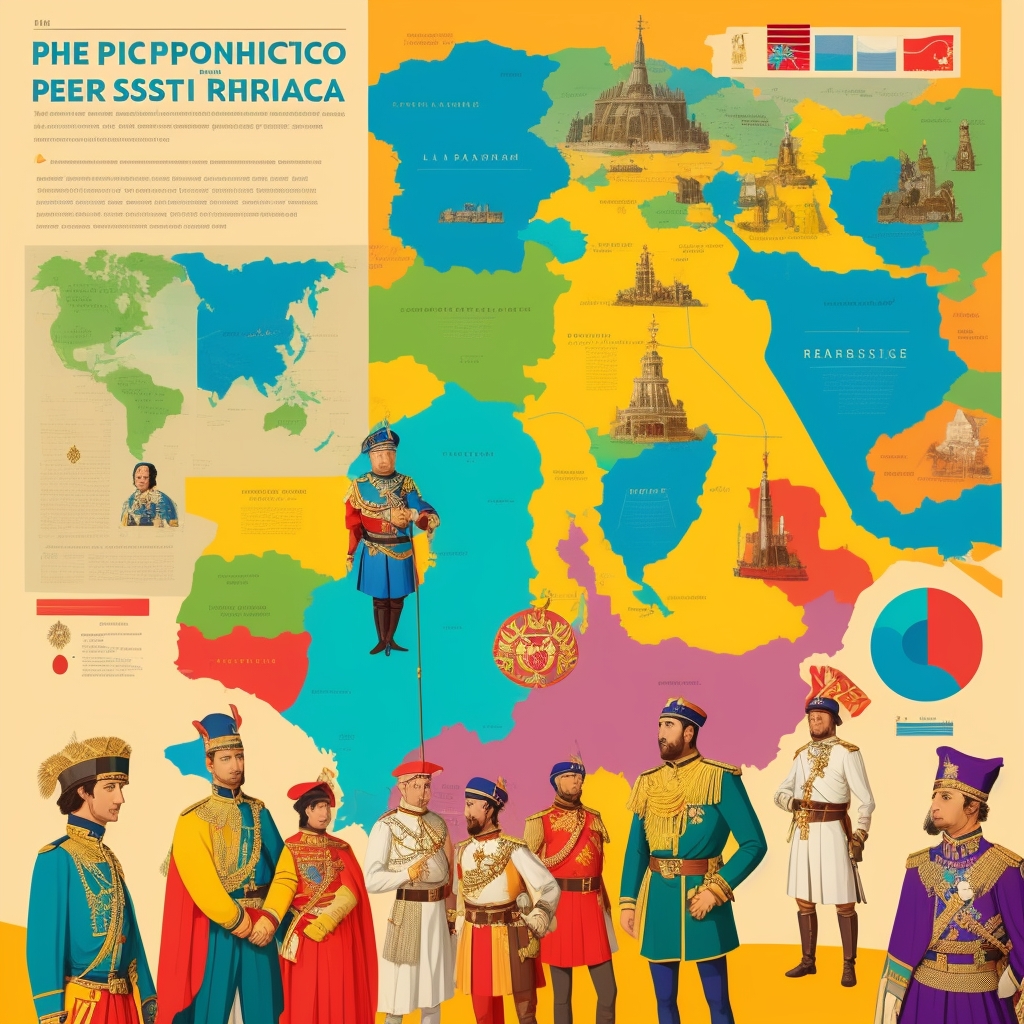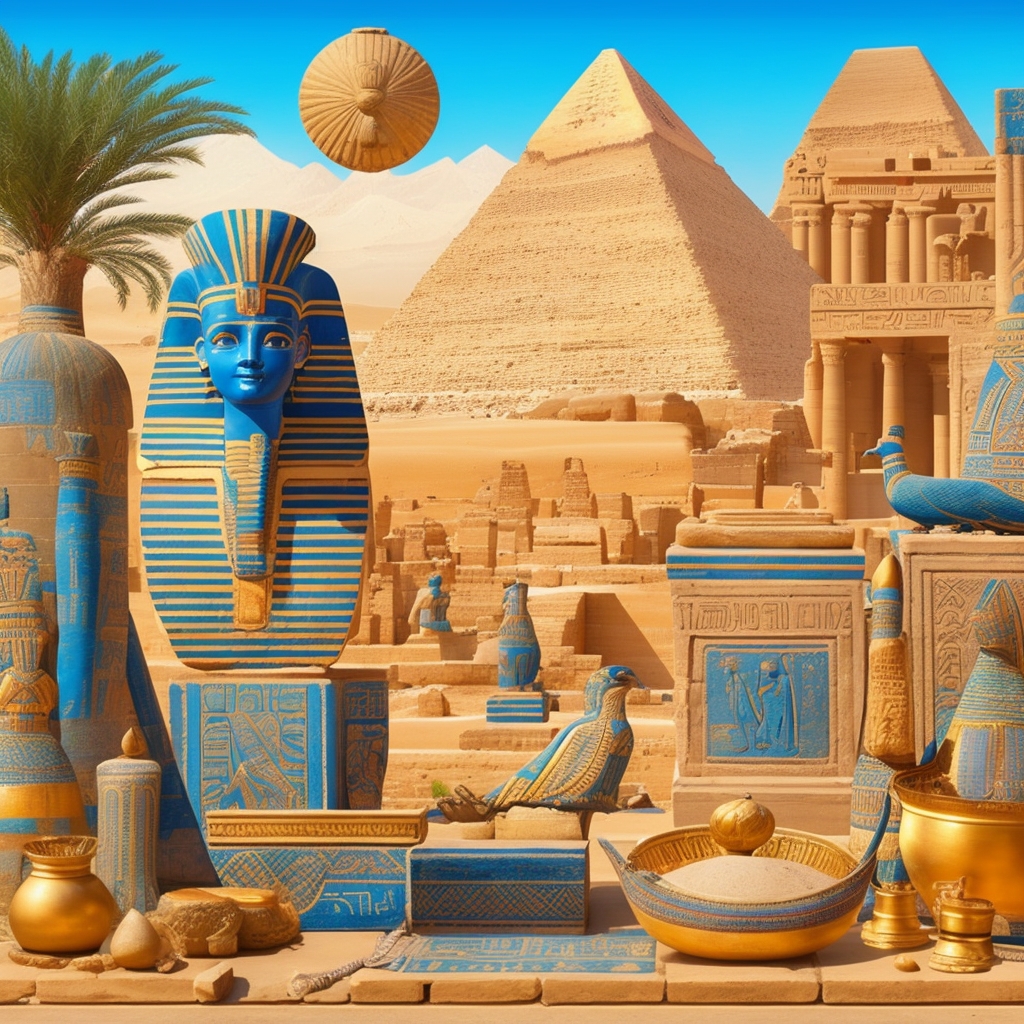The Roman Empire: A Masterclass in Conquest, Control, and Cultural Integration
The Roman Empire was one of the largest and most influential empires in world history, spanning Europe, Asia, and Africa at its zenith around 117 CE under Emperor Trajan. What’s truly fascinating is that its extraordinary expansion and remarkable ability to control such diverse territories weren’t just about brute force. They were driven by an unparalleled blend of military discipline, administrative innovation, and profound cultural adaptability. This comprehensive guide dives into how Rome conquered and managed a vast empire through a masterclass in strategy, infrastructure, and integration, examining the sophisticated mechanisms that allowed a single city-state to dominate the Mediterranean world and beyond for over a millennium.
Military Strategies: The Unseen Genius
Military Power and Organization
Rome’s legions weren’t just soldiers; they were elite military units, meticulously trained for discipline, flexibility, and astonishing efficiency. Each legion comprised approximately 5,000 to 6,000 men organized into cohorts and centuries, creating a modular structure that could adapt to various battlefield conditions. Equipped with superior weapons like the gladius (a short, stabbing sword measuring about 24 inches) and the pilum (a heavy javelin designed to bend on impact, rendering it unusable by the enemy), they adapted to diverse combat environments with remarkable success.
The Roman military machine consistently defeated tribal and state armies across continents, not just through might, but through incredibly coordinated tactics and unwavering resolve. The famous testudo (tortoise) formation, where soldiers locked shields above and around them, exemplified their tactical innovation. It’s truly impressive how their modular structure allowed them to be both a devastating hammer and a precise scalpel on the battlefield, capable of siege warfare, open field battles, and guerrilla suppression with equal effectiveness.
What set Roman legions apart was their professional nature. Unlike many contemporary armies that relied on seasonal levies or mercenaries, Roman soldiers served for 25 years, creating an experienced, cohesive fighting force. This professionalization meant that Roman armies maintained consistent training standards, tactical knowledge, and equipment quality across the empire. The rigorous training regimen included daily drills, forced marches carrying full equipment (approximately 60 pounds), and construction work that doubled as both punishment and practical skill development.
Engineering and Logistics: The Empire’s Lifelines
But here’s the reality: military victories are fleeting without the means to consolidate power. Roman military engineers, often overlooked in the glory of battle, built long-lasting roads, bridges, and forts that were nothing short of revolutionary. The Roman road network eventually stretched over 250,000 miles, with major highways like the Via Appia connecting Rome to distant provinces. These projects weren’t just about convenience; they dramatically accelerated troop movement, optimized supply chain efficiency, and ensured long-term control over conquered lands.
Roman engineering prowess extended far beyond roads. Their siege engines, including the ballista and onager, could breach fortifications that had previously been considered impregnable. The construction of temporary bridges, like Caesar’s famous Rhine crossing in just ten days, demonstrated their ability to overcome natural obstacles that enemies assumed would protect them. Roman camps, built according to standardized plans regardless of location, provided secure bases that could be established quickly and defended effectively.
In essence, Roman roads weren’t merely infrastructure; they were strategic weapons, enabling rapid deployment and cementing Rome’s logistical superiority across vast distances. A Roman legion could march 20 miles per day on these roads, compared to perhaps 10-12 miles on rough terrain. This mobility advantage meant that Roman forces could concentrate at trouble spots faster than enemies could organize effective resistance. One can’t help but admire the sheer foresight involved in these monumental undertakings, many of which are still visible today, with some modern European highways following routes first established by Roman engineers over two millennia ago.
Governance and Administration: The Art of Control
Centralized Provincial Management
Once a territory was conquered, Rome didn’t just leave it to chance. The empire was cleverly divided into provinces, each governed by officials directly loyal to the emperor. This system allowed for incredibly effective centralized control, ensuring consistent tax collection, maintaining law and order, and enforcing Roman laws across even the most distant regions. Provincial governors, typically former consuls or praetors, wielded significant authority but were carefully monitored through various checks and balances.
The provincial system evolved significantly over time. Initially, provinces were governed by magistrates whose primary concern was often personal enrichment. However, Augustus’s reforms created a more professional administrative class, with clear hierarchies, standardized procedures, and regular rotation of officials to prevent the development of local power bases that might challenge imperial authority. Provincial governors were supported by extensive bureaucracies that handled everything from tax collection to judicial proceedings, creating a remarkably sophisticated administrative apparatus for its time.
It was a complex bureaucratic machine, yes, but surprisingly effective for an empire of its size and the communication challenges of the era. The cursus publicus, Rome’s official courier system, enabled relatively rapid communication across the empire, with important messages traveling from Rome to Britain in about 40 days. This communication network was crucial for maintaining central control and coordinating responses to threats or opportunities across the vast imperial territories.
Integration of Local Elites: A Masterstroke of Diplomacy
To avoid constant rebellion and foster loyalty, Rome employed a remarkably pragmatic strategy: integrating local leaders. Rather than simply subjugating them, Rome granted these elites significant privileges, including Roman citizenship and administrative roles within the new provincial structure. This shrewd move dramatically reduced resistance, fostering a sense of shared purpose and accelerating cultural assimilation.
The genius of this approach lay in its flexibility. In Gaul, for example, local aristocrats who had once led resistance against Caesar found themselves serving as Roman magistrates within a generation. Their children often received Roman educations and married into Roman families, creating bonds that transcended mere political convenience. This integration wasn’t limited to the highest levels of society; Rome also recruited auxiliary troops from conquered peoples, offering citizenship upon completion of military service.
It was an ingenious way to turn potential adversaries into invested partners, a testament to Rome’s political sophistication. The policy of extending citizenship, culminating in the Constitutio Antoniniana of 212 CE which granted citizenship to all free inhabitants of the empire, created a shared legal and cultural framework that helped maintain imperial unity. Local elites found that their interests aligned with Rome’s success, as rebellion would threaten their own elevated status within the imperial hierarchy.
Cultural Influence and Social Tools: The Soft Power
Romanization: Shaping a Continent
Beyond military might and administrative prowess, Rome exported its language (Latin), its laws, its distinctive architecture, and its customs through the establishment of colonies and veteran settlements. Local populations gradually, yet profoundly, adopted Roman lifestyles, from public baths to gladiatorial games. This process of “Romanization” wasn’t just superficial; it unified the empire culturally and politically, creating a shared identity that transcended local origins.
The spread of Latin as a lingua franca facilitated trade, administration, and cultural exchange across the empire. While local languages persisted, educated elites throughout the empire could communicate in Latin, creating networks of shared knowledge and culture. Roman law, codified and systematized, provided consistent legal frameworks that replaced the often arbitrary justice systems of conquered territories. The Twelve Tables, and later legal developments, established principles that continue to influence legal systems today.
Roman educational systems, established in major provincial cities, trained local youth in Roman literature, rhetoric, and philosophy. These schools produced generations of provincials who thought of themselves as Romans first and members of their original tribes or nations second. It’s fascinating to consider how deeply this cultural imprint shaped the development of modern European societies, with Romance languages, legal traditions, and architectural styles all bearing clear Roman influences.
The process wasn’t entirely one-way, however. Rome itself was transformed by contact with conquered peoples. Greek philosophy and art, Celtic metalworking techniques, Germanic military practices, and Eastern religious traditions all found their way into Roman culture, creating a dynamic synthesis that enriched the empire as a whole.
Infrastructure and Urban Appeal: The Lure of Civilization
Aqueducts, amphitheaters, public baths, and grand public buildings weren’t just engineering marvels; they were powerful tools of influence. These amenities significantly improved the quality of life in the provinces, showcasing Roman wealth, engineering genius, and the benefits of being part of the empire. Roman aqueducts, like the Pont du Gard in southern France, delivered fresh water to cities hundreds of miles from natural sources, enabling urban populations that would have been impossible otherwise.
The Roman bath system exemplified the empire’s approach to winning hearts and minds through improved living standards. These complexes weren’t merely places to wash; they were social centers where people of different backgrounds could mingle, conduct business, and absorb Roman cultural values. The baths included hot and cold pools, exercise areas, libraries, and meeting rooms, creating spaces that encouraged the adoption of Roman social customs.
They subtly encouraged urbanization, attracting people to Roman-style cities and fostering a sense of loyalty and belonging. Roman urban planning, with its grid systems, forums, and public spaces, created environments that facilitated both commerce and civic participation. The forum, in particular, served as the heart of Roman civic life, where citizens could participate in political discussions, legal proceedings, and commercial activities.
Who wouldn’t want to live in a place with clean water, public entertainment, and sophisticated amenities, especially compared to less developed settlements? Roman cities offered opportunities for social mobility, education, and cultural enrichment that were simply unavailable in traditional tribal societies. This urban appeal was particularly effective in attracting ambitious individuals who might otherwise have led resistance movements against Roman rule.
Case Studies: Empire in Action
Julius Caesar’s Conquest of Gaul
Between 58–50 BCE, Julius Caesar exemplified Roman expansionist genius during his systematic conquest of Gaul. He leveraged existing tribal rivalries, employed brilliant strategic warfare, and, crucially, understood the psychological impact of swift, decisive victories to conquer a territory roughly equivalent to modern France, Belgium, and parts of Germany and Switzerland. Caesar’s commentaries on the Gallic Wars provide detailed insights into Roman military and diplomatic strategies.
Caesar’s approach combined military brilliance with political acumen. He formed alliances with some Gallic tribes while systematically defeating others, preventing the formation of unified resistance. His siege of Alesia in 52 BCE, where he constructed elaborate fortifications to trap Vercingetorix and his forces while simultaneously defending against a relief army, demonstrated the sophisticated engineering capabilities that supported Roman military operations.
What’s often overlooked is how quickly the region was subsequently Romanized, becoming a stable and loyal part of the Empire, providing both resources and manpower for centuries. Within a generation of conquest, Gallic aristocrats were serving in the Roman Senate, and Gallic cities were adopting Roman architectural styles and civic institutions. The transformation was so complete that Gaul became one of Rome’s most prosperous and loyal provinces, contributing significantly to imperial revenues and military recruitment.
The speed of this transformation reflected Rome’s systematic approach to integration. Veterans were settled in colonies throughout Gaul, intermarrying with local populations and serving as agents of cultural change. Roman merchants followed the legions, establishing trade networks that connected Gallic communities to the broader Mediterranean economy. Educational institutions introduced young Gauls to Roman literature and values, creating a generation that identified with Roman rather than tribal traditions.
Pax Romana: An Era of Unprecedented Stability
From 27 BCE to 180 CE, the Pax Romana, or “Roman Peace,” brought an almost unprecedented period of peace, prosperity, and connectivity across the vast empire. While large-scale expansion slowed after Trajan’s conquests, Rome’s robust administration and impressive infrastructure ensured remarkable cohesion and endurance. This period saw the empire reach its greatest territorial extent and achieve its highest levels of economic integration and cultural unity.
During the Pax Romana, trade flourished as never before. Roman merchants could travel safely from Britain to Mesopotamia, protected by Roman law and Roman legions. Standardized currency, weights, and measures facilitated commerce, while Roman roads and harbors provided the infrastructure necessary for large-scale trade. Archaeological evidence shows that goods from across the empire reached even remote frontier settlements, demonstrating the effectiveness of Roman commercial networks.
It was during this period that the benefits of Roman rule truly solidified for its diverse populations, demonstrating the long-term dividends of their initial strategies. Cities throughout the empire experienced unprecedented growth and prosperity. Population levels in many regions wouldn’t be matched again until the modern era. The empire’s population at its peak may have reached 65 million people, supported by agricultural techniques, trade networks, and urban systems that represented the pinnacle of ancient achievement.
The Pax Romana also witnessed remarkable cultural and intellectual achievements. Roman historians like Tacitus and Suetonius, poets like Ovid and Juvenal, and philosophers like Seneca and Marcus Aurelius produced works that continue to influence Western thought. The period saw the construction of iconic monuments like the Colosseum, Trajan’s Column, and Hadrian’s Wall, demonstrating the empire’s wealth and engineering capabilities.
The Antonine Wall and Hadrian’s Wall: Frontier Management
Rome’s approach to frontier management exemplified their strategic thinking about expansion and consolidation. Hadrian’s Wall, built across northern Britain between 122-128 CE, stretched 73 miles from coast to coast and represented one of the most sophisticated frontier fortification systems in the ancient world. The wall wasn’t merely a barrier; it was a complex system of forts, milecastles, and turrets that controlled movement and trade between Roman Britain and unconquered Scotland.
The construction of these frontier works demonstrated Rome’s ability to mobilize massive resources for strategic purposes. Hadrian’s Wall required an estimated 9,000 soldiers working for six years, using approximately 1.5 million cubic meters of stone. The project showcased Roman engineering capabilities while providing employment and training for military units during peacetime.
These frontier systems also served economic functions, controlling trade and collecting customs duties from peoples beyond the empire’s borders. Archaeological evidence suggests that Roman goods flowed north of the walls in exchange for raw materials and slaves, creating economic relationships that complemented military control. The walls thus represented Rome’s sophisticated understanding of how to manage relationships with unconquered peoples while protecting imperial territories.
Economic Foundations: The Wealth of Empire
Taxation and Resource Extraction
Rome’s ability to maintain its vast empire depended fundamentally on its sophisticated taxation system. Provincial tribute provided the revenues necessary to support the legions, fund public works, and maintain the imperial administration. The empire developed various forms of taxation, including land taxes, customs duties, and special levies for military campaigns.
The Roman taxation system was remarkably efficient for its time. Census operations, conducted regularly throughout the empire, assessed population and wealth levels to ensure fair tax distribution. Tax farming, while sometimes abusive, provided a mechanism for collecting revenues from distant provinces without requiring extensive imperial bureaucracies. The system generated sufficient revenues to support approximately 300,000 soldiers, extensive public works programs, and the elaborate imperial court.
Roman economic policy also encouraged productivity and trade. The empire’s common currency, legal system, and infrastructure reduced transaction costs and facilitated long-distance commerce. Roman law protected property rights and enforced contracts, creating conditions that encouraged investment and economic development. The result was sustained economic growth that supported population increases and rising living standards throughout much of the imperial period.
Agricultural Innovation and Urban Supply
Roman agricultural techniques and land management practices supported population densities that wouldn’t be matched in many regions until the modern era. The empire developed sophisticated systems for supplying major cities, particularly Rome itself, which may have reached a population of one million people. The annona system, which provided subsidized grain to Roman citizens, required coordinating agricultural production across multiple provinces and managing complex supply chains.
Roman agricultural innovations included improved plowing techniques, crop rotation systems, and hydraulic engineering for irrigation. Large estates (latifundia) in provinces like Egypt and North Africa produced grain surpluses that fed urban populations throughout the empire. Roman agricultural writers like Columella and Pliny the Elder documented farming techniques that represented the pinnacle of ancient agricultural knowledge.
The empire’s urban supply systems demonstrated remarkable logistical capabilities. Rome’s port at Ostia handled massive grain shipments from Egypt and North Africa, while aqueduct systems delivered fresh water to support large urban populations. These achievements required coordinating activities across vast distances and managing complex bureaucracies, showcasing the administrative sophistication that underpinned Roman success.
Key Takeaways: Rome’s Enduring Lessons
| Pillar | Description | Modern Relevance |
|---|---|---|
| Military Discipline | Rome’s highly trained legions consistently won wars and maintained order through professional standards and systematic training. | Professional military organizations worldwide still study Roman tactical innovations and organizational structures. |
| Infrastructure | Roads, forts, aqueducts, and bridges secured fast mobility and defense, enabling control while improving quality of life. | Modern infrastructure development continues to follow Roman principles of strategic planning and engineering excellence. |
| Centralized Governance | Efficient provincial rule reduced corruption and chaos, ensuring stability through standardized procedures and regular oversight. | Contemporary federal systems and international organizations draw inspiration from Roman administrative innovations. |
| Cultural Integration | Romanization and elite inclusion reduced resistance and ensured loyalty by creating shared identities and opportunities for advancement. | Modern approaches to immigration and cultural integration often reflect Roman strategies for managing diversity. |
Advanced Analysis: The Mechanics of Imperial Success
Communication and Information Networks
Rome’s success depended heavily on its ability to gather and disseminate information across vast distances. The empire developed sophisticated intelligence networks that monitored potential threats, tracked economic conditions, and assessed the loyalty of provincial populations. Roman governors maintained extensive correspondence with the imperial court, providing regular updates on conditions in their territories.
The cursus publicus, Rome’s official postal system, represented one of the most advanced communication networks in the ancient world. Relay stations positioned at regular intervals allowed official messengers to travel rapidly across the empire, carrying orders, reports, and intelligence. This system enabled the imperial government to respond quickly to crises and coordinate policies across multiple provinces.
Roman record-keeping practices also contributed to imperial effectiveness. Detailed census records, tax assessments, and military rosters provided the information necessary for effective governance. The empire maintained archives in major cities throughout its territories, creating redundant information systems that ensured continuity even when individual records were lost or destroyed.
Religious Policy and Imperial Unity
Rome’s approach to religion demonstrated remarkable pragmatism and political sophistication. Rather than imposing a single religious system, the empire generally practiced tolerance while promoting cults that supported imperial unity. The imperial cult, which venerated deceased emperors as gods, provided a unifying religious framework that transcended local traditions.
Roman religious policy evolved significantly over time. The early empire incorporated numerous foreign deities into the Roman pantheon, reflecting the diverse origins of imperial subjects. Mystery religions like Mithraism and Christianity gained followers throughout the empire, often spreading along trade routes and military networks. The eventual adoption of Christianity under Constantine represented a fundamental shift in imperial religious policy, but one that maintained the principle of using religion to promote political unity.
The empire’s religious tolerance had practical benefits beyond mere political expediency. By allowing conquered peoples to maintain their traditional beliefs, Rome reduced potential sources of resistance while gradually introducing Roman religious practices. This approach created syncretic religious traditions that combined local and Roman elements, fostering cultural integration while respecting existing beliefs.
FAQs: Unpacking Roman History
Why did the Roman Empire fall despite its size?
It’s a complex question, and historians still debate the exact reasons, but the collapse resulted from multiple interconnected factors that developed over several centuries. A combination of internal corruption, severe economic crises, frustrating overextension (making it incredibly difficult to manage effectively), and relentless external invasions gradually weakened Rome’s ability to govern effectively, ultimately leading to its transformation and eventual collapse in the west.
The economic challenges were particularly severe. Debasement of currency to fund military expenses led to inflation and reduced confidence in Roman money. The cost of maintaining the military and bureaucracy grew while tax revenues declined due to population losses and economic disruption. The empire also faced increasing pressure from Germanic tribes and other groups seeking to enter Roman territory, either as invaders or refugees.
Political instability compounded these problems. The third century crisis saw dozens of emperors rise and fall in rapid succession, preventing consistent policy implementation. The division of the empire into western and eastern halves, while initially successful, eventually led to competition between the two imperial courts and reduced coordination in facing common threats.
It wasn’t a single event, but a long, drawn-out process spanning several centuries. The western empire gradually lost control over its territories, while the eastern empire (Byzantine Empire) continued for another thousand years, demonstrating that Roman institutions could adapt and survive under different circumstances.
How did the Roman military evolve over time?
The Roman military underwent a significant and critical transformation that reflected broader changes in Roman society and strategic requirements. It transitioned from citizen militias, where ordinary citizens served for specific campaigns, to highly professional, full-time armies. This evolution dramatically improved readiness, flexibility, and their capacity for long-term campaigns far from Rome, becoming a truly formidable fighting force.
The early Roman army was based on the citizen-soldier model, where property-owning Romans served in the military as a civic duty. The manipular system organized troops into flexible units that could adapt to different battlefield conditions. However, as Rome’s wars became longer and more distant, this system proved inadequate.
Marius’s reforms in the late second century BCE created the professional legionary system that dominated Roman military organization for centuries. Soldiers served for 25 years, received standardized equipment and training, and were promised land grants upon retirement. This professionalization created experienced, loyal armies capable of extended campaigns and complex operations.
Later military evolution included the increased use of auxiliary troops recruited from non-citizen populations, the development of specialized units like cavalry and archers, and the construction of permanent frontier fortifications. The late empire saw further changes, including the division between mobile field armies and static frontier forces, reflecting new strategic challenges and resource constraints.
What role did religion play in imperial administration?
Religion played a surprisingly pragmatic role in Roman imperial administration, serving both as a tool of political unity and a means of cultural integration. The imperial cult, which venerated the emperor as a divine or semi-divine figure, helped unify the diverse empire and legitimize Roman authority in newly conquered regions. This religious framework provided a common focus of loyalty that transcended local ethnic and cultural divisions.
Furthermore, Rome generally practiced religious tolerance, allowing conquered peoples to maintain their local deities as long as they also acknowledged Roman gods and the emperor, which cleverly reduced religious friction and fostered a degree of acceptance. This policy recognized that religious persecution often provoked resistance and rebellion, while tolerance could facilitate political integration.
Roman religious policy also served administrative functions. Priests and religious officials often played roles in local government, helping to maintain order and collect taxes. Religious festivals and ceremonies provided opportunities for displaying imperial power and wealth while entertaining the population. The construction of temples and religious buildings demonstrated Roman prosperity and engineering capabilities.
The eventual adoption of Christianity represented a major shift in imperial religious policy, but one that maintained the principle of using religion to promote political unity. Christian bishops became important figures in imperial administration, particularly in the later empire, while Christian theology provided new justifications for imperial authority and social order.
How did Rome manage such cultural diversity?
Rome’s management of cultural diversity represented one of its greatest political achievements, combining pragmatic tolerance with systematic integration policies. The empire encompassed hundreds of different ethnic groups, languages, and cultural traditions, yet maintained political unity for centuries through sophisticated approaches to cultural management.
The key was Rome’s flexible approach to identity and citizenship. Rather than demanding complete cultural assimilation, Rome allowed local traditions to continue while gradually introducing Roman practices and values. This process, known as Romanization, created hybrid cultures that combined local and Roman elements, fostering integration without completely destroying existing traditions.
Educational policies played a crucial role in managing diversity. Roman schools in provincial cities taught Latin language and literature, Roman law and history, and classical philosophy, creating educated elites who identified with Roman culture while maintaining connections to their local communities. These individuals often served as intermediaries between Roman administrators and local populations.
Economic integration also promoted cultural unity. Trade networks connected distant regions of the empire, spreading Roman goods, ideas, and practices. Roman currency, legal systems, and commercial practices created common frameworks that facilitated interaction between different cultural groups. Military service provided another avenue for cultural exchange, as auxiliary troops from different regions served together and adopted common military traditions.
Conclusion: A Legacy That Endures
The Roman Empire’s massive expansion was absolutely no accident — it was the direct result of disciplined military strategy, remarkably intelligent governance, incredibly savvy cultural integration, and sophisticated economic management. The empire’s success stemmed from its ability to adapt and innovate, combining military conquest with political integration, cultural tolerance with systematic Romanization, and centralized control with local autonomy.
Rome’s achievements in engineering, law, administration, and military organization established precedents that continue to influence modern institutions. The Roman legal tradition forms the foundation of legal systems throughout Europe and Latin America. Roman architectural and engineering techniques influenced construction practices for centuries. The concept of professional military service, systematic urban planning, and bureaucratic administration all trace their origins to Roman innovations.
Perhaps most importantly, Rome demonstrated that diverse populations could be unified under common institutions while maintaining their cultural distinctiveness. This lesson remains relevant in our contemporary world, where nations and international organizations grapple with similar challenges of managing diversity while maintaining unity.
Its profound legacy continues to inspire and inform modern systems of administration, infrastructure development, strategic thinking, and cultural integration. The Roman Empire truly stands as a testament to what a unified, well-organized, and adaptable civilization can achieve, while also serving as a cautionary tale about the challenges of maintaining such achievements over time. The empire’s eventual transformation and decline remind us that even the most successful institutions must continue to adapt and evolve to meet changing circumstances, a lesson as relevant today as it was two millennia ago.







